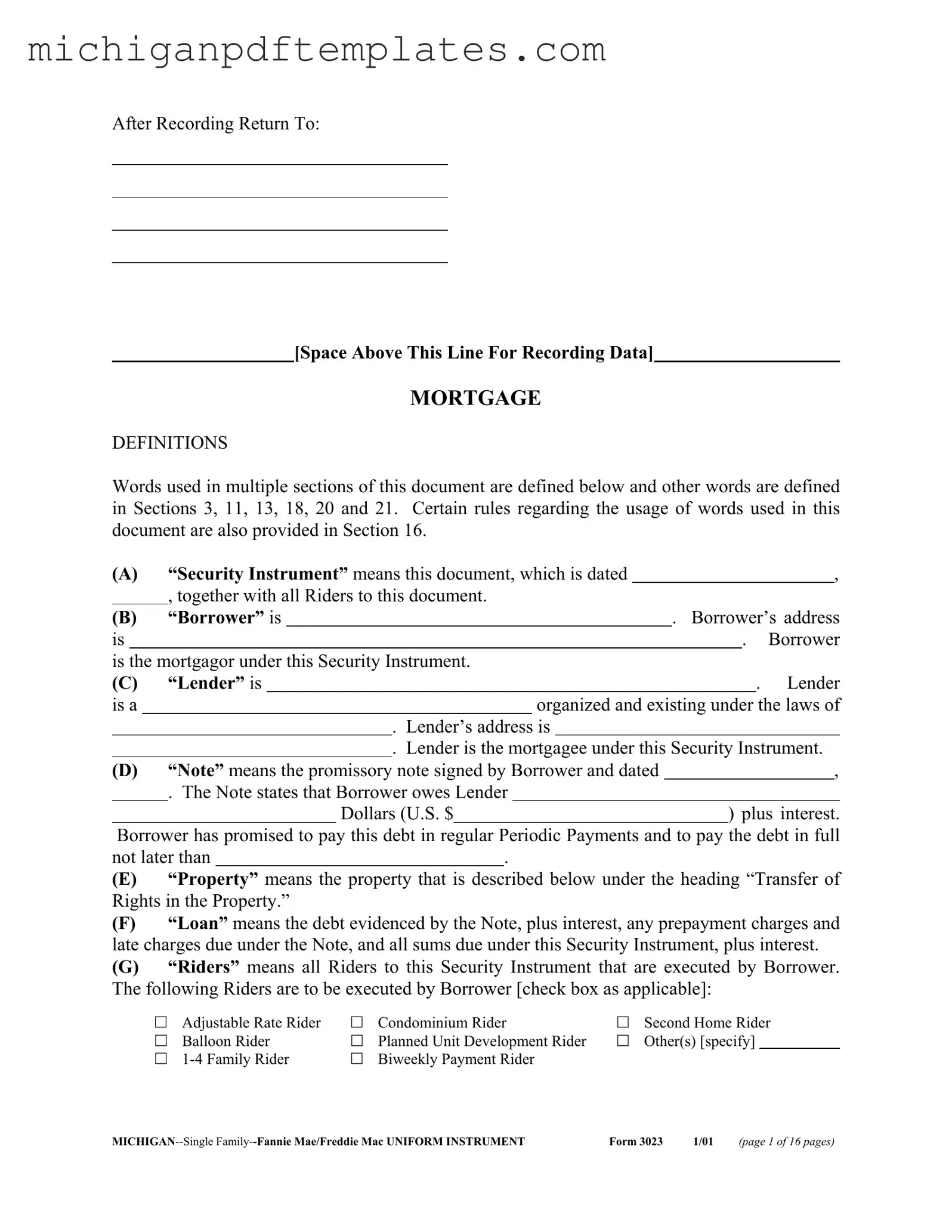Fill in Your Michigan 3023 Form
The Michigan 3023 form serves as a security instrument that outlines the terms and conditions of a mortgage agreement between a borrower and a lender. It includes definitions of key terms, such as "Borrower," "Lender," and "Property," as well as details regarding payment obligations, escrow items, and the rights of both parties. Understanding this form is crucial for anyone involved in real estate transactions in Michigan.
To ensure compliance and accuracy, fill out the Michigan 3023 form by clicking the button below.
Get Your Form Now
